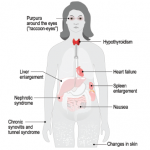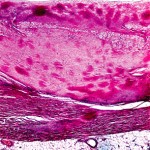A new proof-of-concept human study has used RNA interference (RNAi) to target the gene that codes for transthyretin. The results indicate that RNAi therapy can decrease levels of messenger RNA transcribed from a disease-causing gene.
While RNAi therapy has long been considered a theoretical possibility, the safe and effective delivery of RNAi has been a barrier to implementation. Teresa Coelho, MD, from Unidade Clinica de Paramiloidose Hospital de Santo Antonio in Porto, Portugal, and colleagues published the groundbreaking results in The New England Journal of Medicine.1 They describe two RNAis, ALN-TTR01 and ALN-TTR02, both of which were both able to suppress the production of mutant and nonmutant forms of transthyretin in 32 patients with transthyretin amyloidosis.
Familial amyloidotic polyneuropathy is endemic in Portugal and Sweden, where the study was performed. Liver-derived transthyretin has been identified as the disease-causing protein in transthyretin amyloidosis, thereby revealing transthyretin as a target gene. The results from the current study suggest that RNAi therapy may be able to improve the course of disease in patients with transthyretin amyloidosis.
The investigators report that a single dose of ALN-TTR01 could rapidly and significantly suppress production of transthyretin in the liver as well as reduce circulating levels of transthyretin. The effect was dose dependent, long lasting, and mediated by the RNAi.
ALN-TTR01 had no measurable effect on transthyretin levels when administered at doses of 0.1–0.7 mg/kg. When dosed at 1.0 mg/kg, however, treatment with ALN-TTR01 resulted in a 38% mean reduction of transythyretin at day seven (P=0.01 compared to control). Patients recovered close to baseline levels of transthyretin by Day 28.
The RNAi was equally effective at lowering levels of mutant and nonmutant transthyretin. Both mutant and nonmutant forms had the same kinetics of lowering and recovery.
The investigators found the RNAi ALN-TTR02 to be even more potent than ALN-TTR01. While they saw no effect at the two lowest doses of ALN-TTR02, the effects were pronounced when ALN-TTR02 was dosed at 0.15–0.3 mg/kg. Mean reductions in transthyretin ranged from 82.3% to 86.8% at Day 7 and 56.6% to 67.1% at Day 28 (P<0.001 for all comparisons).
One patient received the highest dose of 0.5 mg/kg of ALN-TTR02, but the dose was found to be only modestly more effective than a dose of 0.3 mg/kg, and therefore the higher dose was discontinued.
“It was very much what we have hoped for from animal experiments,” says Co-Investigator Ole C. Suhr, MD, of the department of public health and clinical medicine at Umeå University in Umeå, Sweden. The investigators had previously published that a single dose of ALN-TTR01 decreased transthyretin by 50% in monkeys. They also found ALN-TTR02 to be 10 times as potent ALN-TTR01 in the primate studies, and its effect could be maintained with multiple (every four week) doses.


